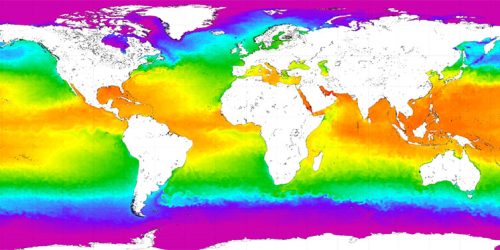Atmospheric rivers carry moisture from the tropics to other climate zones and produce important precipitation patterns on a local scale. Predicting atmospheric rivers in our warming climate has been challenging because there are a variety of ways to represent them in models, depending on the scientific questions posed in the experiment. An international group of researchers, including scientist Colin Zarzycki of Pennsylvania State University who is supported by a grant from the Climate Program Office’s Climate Variability & Predictability (CVP) Program, set out to answer two critical questions through the Atmospheric River Tracking Method Intercomparison Project (ARTMIP). How may atmospheric rivers change with global warming, and what are the uncertainties associated with different definitions in models? Both of these questions are highly relevant for water resource planning.
The project aimed to compare projected changes in atmospheric river characteristics such as size, intensity, seasonality, and precipitation using 16 different methods of defining an atmospheric river to a high-resolution historical and future climate simulation. An overview of ARTMIP was recently published in Geophysical Research Letters, discussing the project’s approach and unique aspects and results of the comparison study. As a general trend with warming, the results show that the number of atmospheric rivers will increase, but just how much depends on the method used. Interestingly, projections show more extreme precipitation across all methods and study regions. The authors quantify the uncertainty associated with each method for varying time and spatial scales, and show that overall, restrictive definitions detect fewer atmospheric rivers and show a weaker climate signal. This study emphasizes that relying on one method of defining atmospheric rivers or multiple similar methods does not produce reliable future predictions. This project contributes to a growing body of work by the Climate Process Teams (CPTs) that CVP currently supports. CPTs are interdisciplinary research groups that aim to advance our understanding of atmospheric processes to improve climate models.










